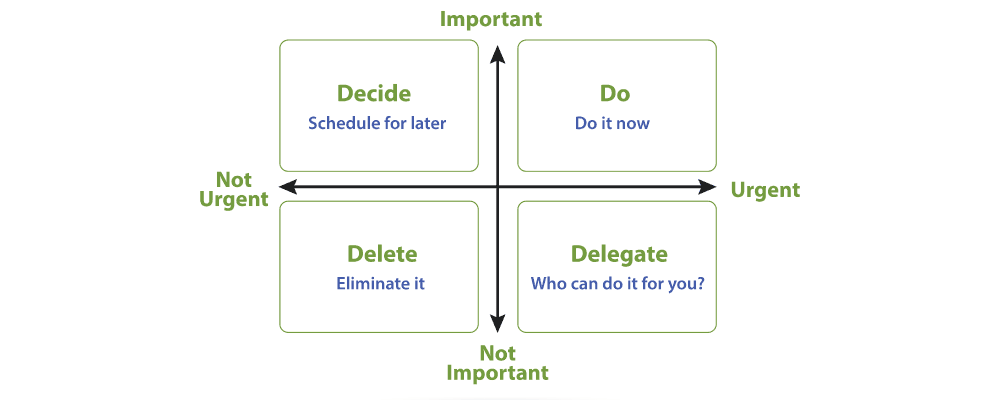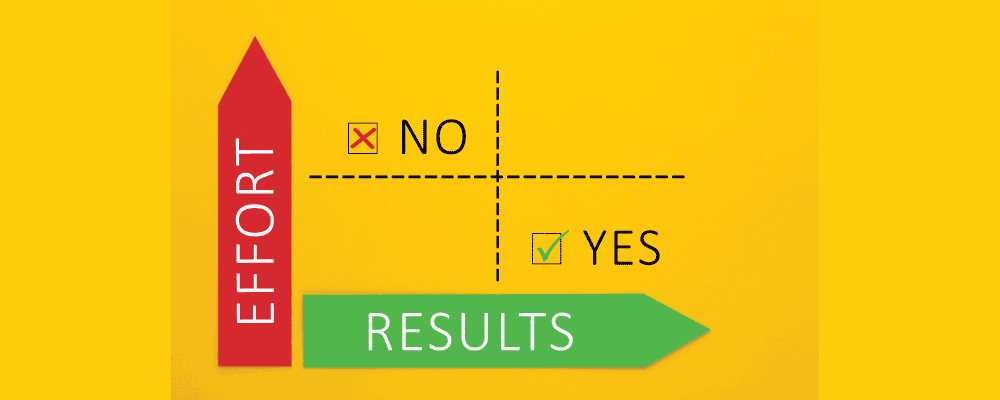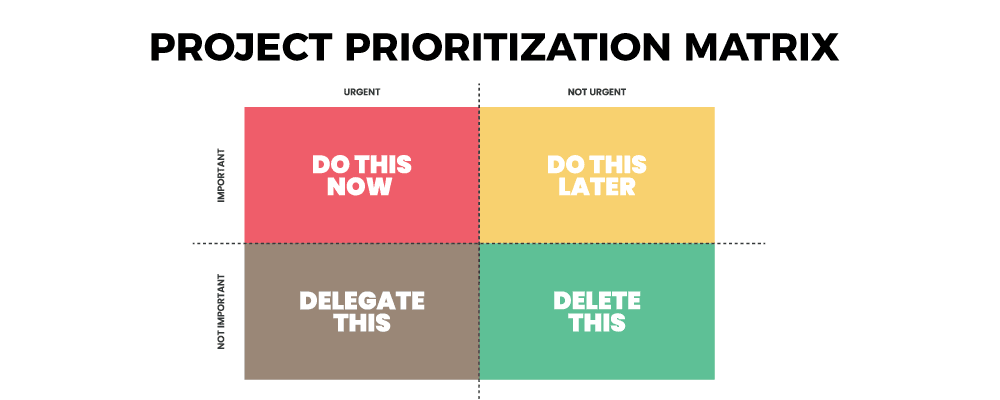Project management is a tricky business. Even with abundant resources and a good team, executing a project without a sound and relevant workflow design is the perfect recipe for failure. In contrast, good and practical project management almost always pays off.
It is a curious case as to what exactly makes a good and practical managing style excellent and valuable. Is it the team or perhaps the vision? While the elements of a good team or a greater vision matter for a project to succeed, adaptability is the rate-limiting trait that determines if a certain project management style will deliver. This ability to adapt could be against time, circumstances, or even methods and tools.
Suppose a team can adapt to using a better tool to maximize their output compared to a team that favors tradition over learning. In that case, the former group will outperform by their adaptability. In the same way, we see how two different tools or methods, the Project Prioritization Matrix, and the agile approach, can be integrated for enhanced results.
Most project management styles dictate where and how to start a plan, and which sub-plots must be rendered attention more than others. However, in a complex, dynamic business where the factors affecting a project are immense, prioritizing tasks and projects can be a hassle. This is where Project Prioritization Matrix comes in. This way, a manager knows what his or his team’s priority is at all times.
Project Prioritization Matrix: An Overview

As the name implies, a Project Prioritization matrix is a matrix that helps its user prioritize tasks into multiple categories. The user can be anyone and the task can be anything. It was developed by Steven Covey, author of the book ‘Seven Habits of Highly Effective People’, as a time-saving method for people in general.
It is also defined as a structured approach to working on what matters most for the project’s stakeholders. It is a simple tool that offers a way to sort a diverse set of items into an order of priority. It also shows their relative importance by providing a means for ranking projects or any project requests based on criteria that are determined to be important.
The traditional Project Prioritization Matrix is based on the Eisenhower method and uses a two-by-two box to categorize tasks based on urgency, importance, and relevance. Also referred to as Priority Matrix, it was released as an application in 2020 that can run on Windows, iOS, macOS, and Android. Simply put, it’s now available as a digital analytical tool that helps boost efficiency and keeps you reminded about the priorities of your to-do lists.
The question is how this matrix is important to agile teams. Before getting to the crux of the matter, though, it is important to look at the Agile approach and how developers use it.
The Agile Method
Regarding software development, there are several approaches to project management, each with its own list of pros and cons. One of these approaches is the agile methodology. The Agile methodology, or the Agile approach, is a set of principles that guide developers to focus on making software development a more dynamic and continual process. Agile is in direct contrast to waterfall approaches, which guide a stricter, linear, one-after-the-other-step approach to software development.
Agile teams use a framework that values:
- Working together with your customer and other developers
- Keeping the process of development adaptable to constant changes
- Focusing on producing working software throughout the process
The Agile approach was inspired by Ford’s assembly line-up in 1913 and was badly needed by the end of the 20th century when systems and applications underwent rapid changes. Where the waterfall approach became obsolete in catering to the needs of ever-changing product designs, Agile proved right.
The Agile approach is only a framework of principles and many types. Scrum, Lean, Extreme Programming (XP), and Kanban are the most commonly used. Agile teams can simultaneously develop, modify and test an under-process product. This not only ensures better business-end satisfaction but also minimizes the time lag in making the product. You can read more about the agile manifesto here.
Also see:
Agile vs Waterfall – Which Project Management Methodology to Choose?
Now that you’re familiar with the working parts, let’s assemble the discussion. Here are six reasons why a Project Prioritization Matrix can be helpful to agile teams:
Six Reasons Why the Priority Matrix Is a Good Tool to Be Used By Agile Teams:

Let’s have a look at the reasons why the project priority matrix is good your teams:
1. Project Prioritization Matrix Is a Simplifier!
The Priority Matrix does one job very well. It breaks down complex problems into simple, actionable tasks. These tasks come arranged by the priority matrix according to the criteria you have fed the application. This arrangement lets you know which tasks are urgent, which are non-urgent but important, which are neither and which must be discarded. Interestingly, agile teams operate similarly.
The Agile approach requires projects to be done in small, iterative chunks that can be pieced together in the final phase. Thus, it makes sense that a team using the Agile approach to develop an application will require a Priority Matrix to stay on track.
2. The Agile Method Lacks a Structure
The agile approach to Software development (and testing) occurs continually and repetitively. This requires the development phase to be broken down into many sub-phases that are handled simultaneously. This breakdown of a macro-plan into smaller, circular processes removes the structure of a definite plan.
The Priority Matrix serves to remind the team of their priorities, albeit changing and diverse, even when the plan loses its structure. It can even provide an alternative for a structure by task-managing parts of the plan and organizing them into order for the team to work on. While this purposeful ‘de-structuring’ enables the agile team to be thorough and remove any errors as they arise, the smaller processes can be difficult to manage, especially if under-resourced.
3. As The Projects Get Upped In Size, So Does the Time
The Agile approach is perfect for small or even moderately sized projects. This is because small projects can be easily managed against quality and time while keeping the business satisfied. On the contrary, a big project must be broken into multiple smaller projects.
Priority Matrix can augment an agile team to keep track of their deadlines, priorities, and businesses on both smaller and larger levels. This is especially important for teams working on multiple app development or testing projects. As the number of tasks increases, the Priority matrix solves the problem of overcrowding issues and reminds the team about the retained and updated priorities of the bigger project.
4. Collaboration Is Central To Agile Teams
One of the key features of an agile approach is that it owes its viability to a constant open communication channel with your business client. As both parties may not be on the exact location or even on the same page, the Priority Matrix keeps both the developers and clients updated on their previous, current, and future decisions and priorities.
The interface of Priority Matrix allows for easy cloud-sharing. So as the Matrix keeps a record of and organizes all important as well as urgent steps to take next, all concerned parties can be on the same page about the next step forward.
5. Communication between Teams Is As Important As It Is Within a Team
It is clear by now that communication on all fronts is a vital aspect of an agile method. The Priority Matrix app can be customized for all teams to access the progress of other teams. This way, teams working on different stages of development of the same part of, say a gaming app, can stay on top of the matter.
As the Priority Matrix keeps the progress status and priorities updated, the teams can effectively communicate what to do next. This way, teams working directly on technical errands are as informed and directed as the teams working alongside them. This is especially important if individuals are not able to hold regular meetings.
6. It Can Help Manage Expectations
The Priority Matrix can help the user know and prioritize their end of the plans and subsequently guide their next steps. A user can easily access this information, which has two-fold merits. One, the user can be made aware of when his product will be ready so he can make concerning decisions about his business.
Secondly, the interaction between developers and users is cushioned as both parties know the progress, priorities, and approximate time the project will take. In an Agile environment where plans are subject to constant change and priorities are made to be flexible, the Project Prioritization Matrix is important.
Wrapping it up
To conclude, an agile software development approach tends to produce better results. However, the methods themselves can be extremely time-confusing and elaborate. One way to reduce this and other drawbacks of the agile approach is to use a Project Prioritization Matrix. The matrix considers both the developers’ and users’ criteria for important and urgent tasks. When finished, these tasks can be prioritized allowing both users and developers to act appropriately and on time.
Whether you are working alone or with a team – time, money and energy are limited resources. It makes complete sense to prioritize those tasks that offer the most value. In the case of project teams, the project manager must keep a firm handle on the different project management process groups involved, such as the product life cycle for project completion. This is where the matrix can definitely help you out!
More Readings For You:
- Beginners’ Guide to Decision Matrix in Project Management
- A Guide on Matrix Organizational Structure and Everything It Contains
- How to Use the Risk Assessment Matrix in Project Management?
- A Useful Guide to Requirements Traceability Matrix
- 4 Quadrants of Time Management Matrix
- What Is Hoshin Kanri Method and How Can You Drive Progress with It?
- All New Risk Matrix, Risk Custom Fields, and Much More

